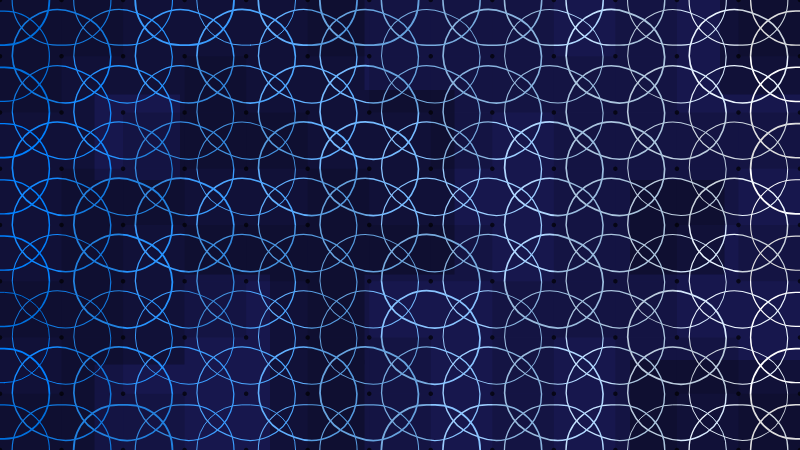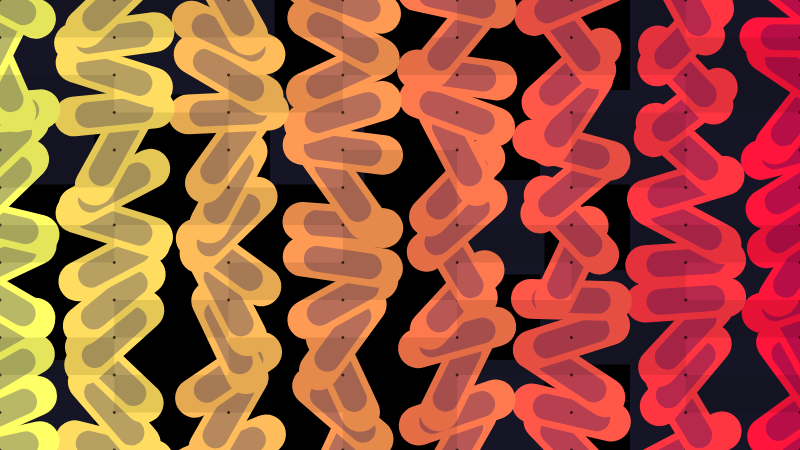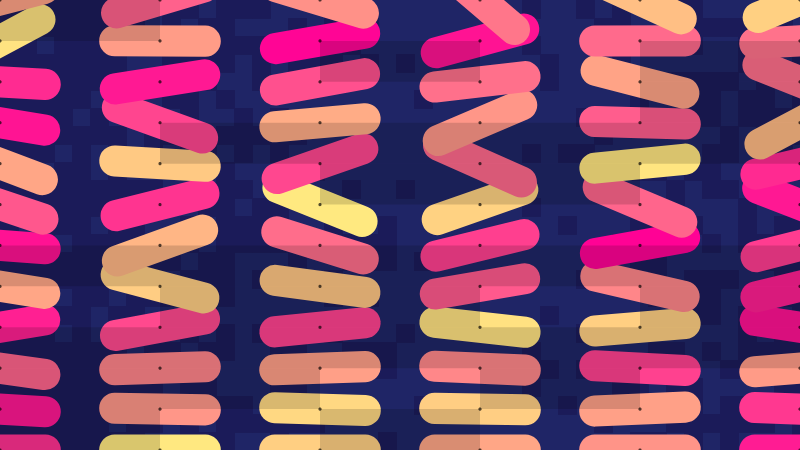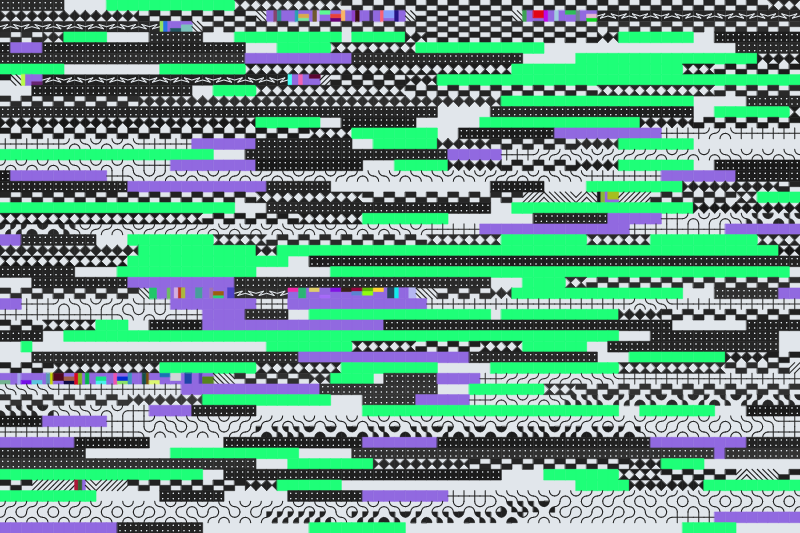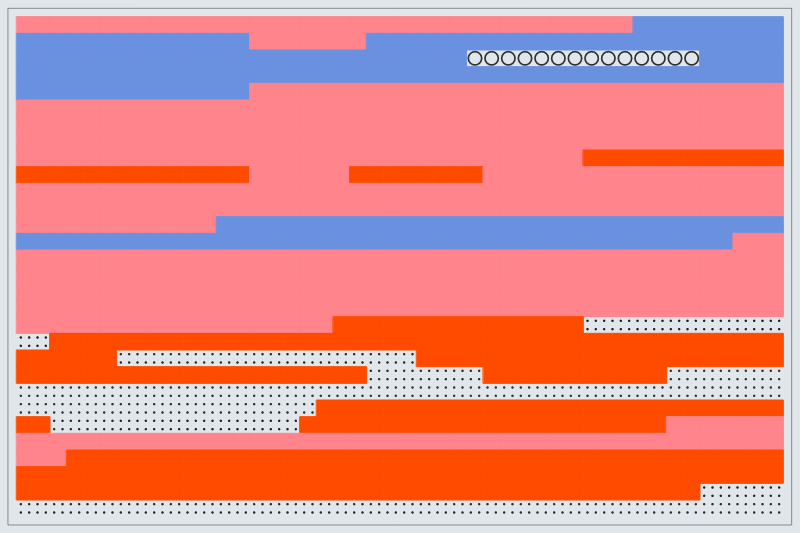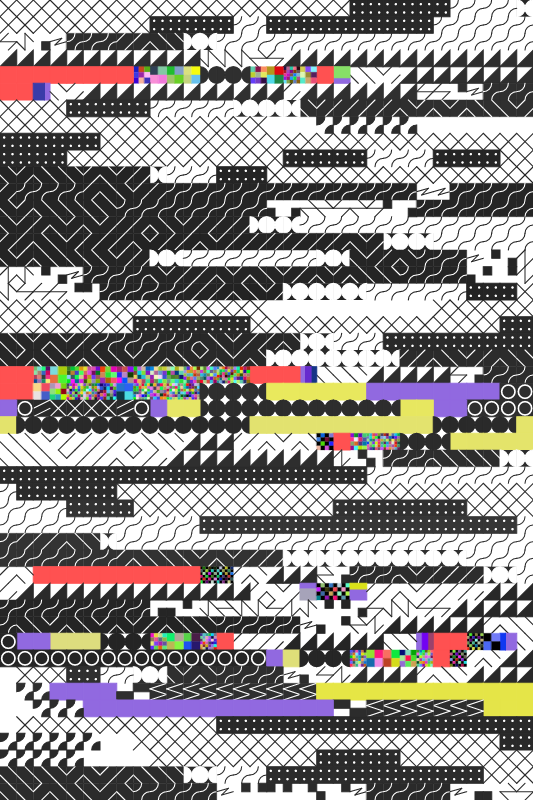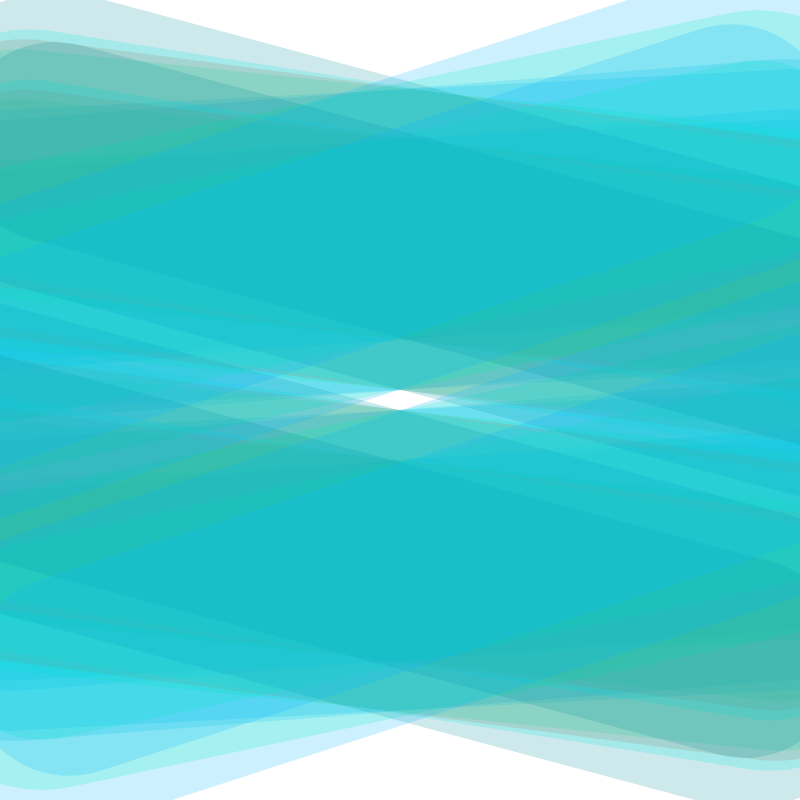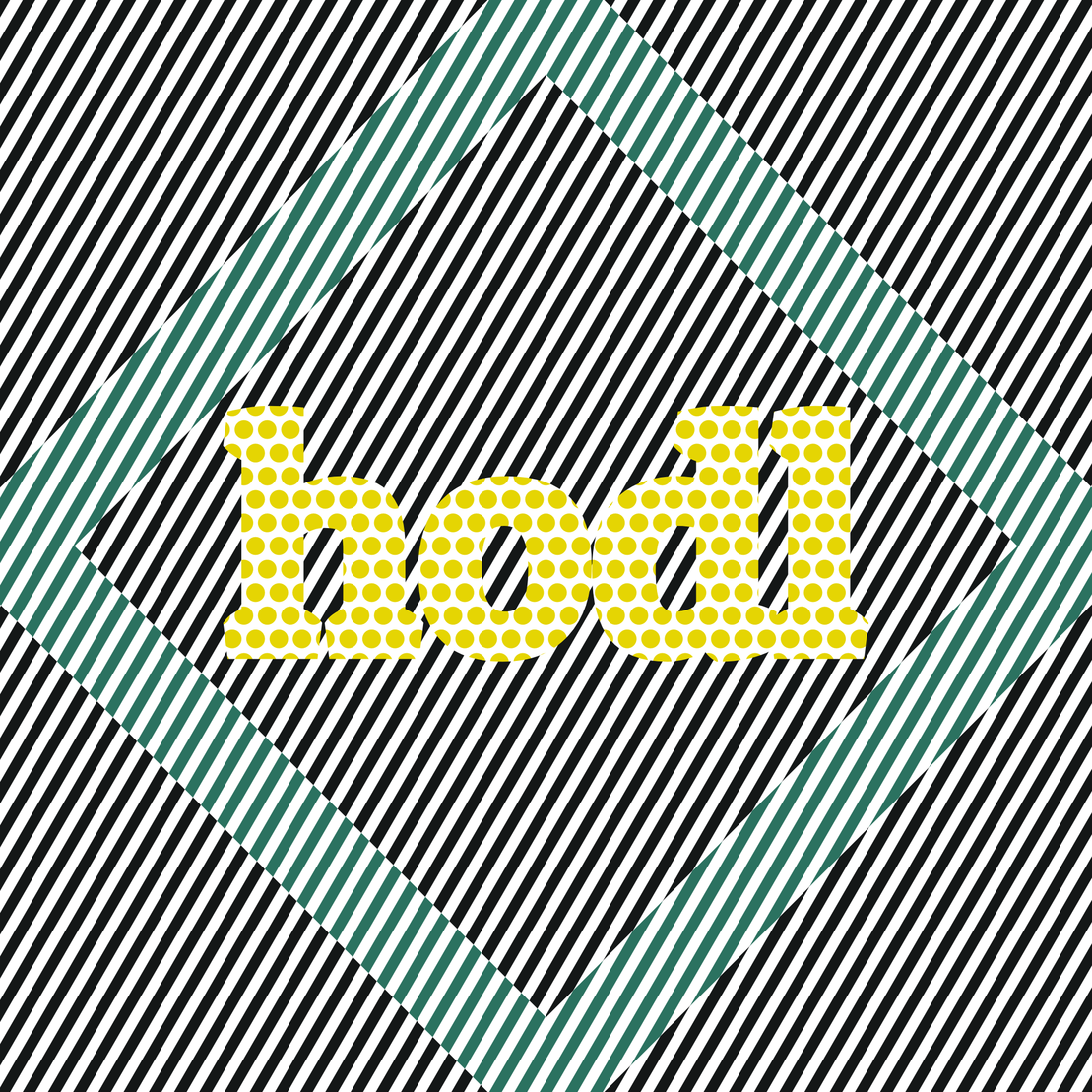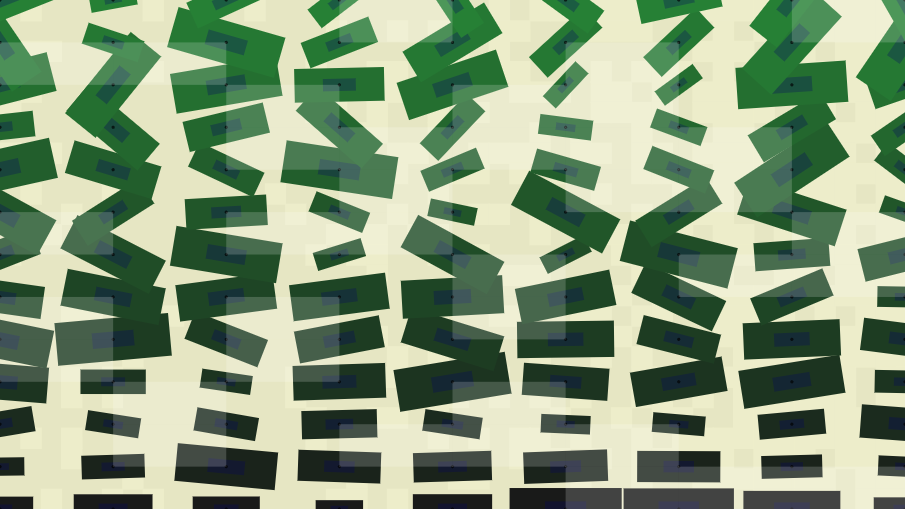
ArtPlusBrad Interview
written by gather
Who are you?
My name is Brad Damico, although, my work is generally seen under the name artplusbrad, and I'm an abstract digital artist from the United States.
project name project name project name
When did you start making art?
Growing up, my father was interested in art, mainly drawing and photography, so I always had that in my life. But it wasn't until college when I really became focused on creating. It started with playing guitar, and, from the beginning, I wanted to write my own songs. I didn’t have a musical background, so it was a struggle, but I’ve continued with it throughout my life. By the end of college, I started using a computer and Fruity Loops to create more electronic music, which was a period when I realized that creating brought me joy and needed to be a regular part of my life.
My interest in visual art grew about 15 years ago through playing disc golf. I noticed early on after discovering the sport that some players would dye their frisbees to make them unique. I began learning this technique and came up with my own process for dying designs on my discs. I used tape to create minimalist line-based patterns, and running the same disc multiple times through this process allowed some great designs to take shape.
I dyed hundreds of discs over a few years’ period, and eventually I decided to take this technique to canvas with acrylic paints. At the time, I was also visiting more galleries and learning about visual art in general, so this convinced me to move to a more traditional medium. I was introduced to hard edge and color field painting, two areas of art which were similar to what I was trying to do with tape and paint.
After a few years of working with physical canvases, I decided to try taking my line-based designs digital. Immediately, I realized the benefits. I didn’t have to wait for the paint to dry before adding the next lines (no more loud hair dryer), and I could remove lines, or move them above and below other lines, at will. I was able to create many pieces in a day rather than part of one. Eventually, I branched off into more areas of digital art, incorporating photography and creative coding; most of that history can be seen on the Ethereum and Tezos blockchains.
When did you start making generative art?
I discovered NFTs in the summer of 2018 through an article discussing Rare Art Labs. I had been creating digital art for a few years at that point, and one of the struggles was what to do with the art. It was great that I could create all these works, but I wanted to do more with them. Rare Art Labs gave me that opportunity. I applied to be part of their initial group of artists on the platform and was accepted with some works that are now part of my Distortion series. Getting that first sale, where a person you don’t know is willing to spend their money on your art, is a moment no artist forgets.
It was clear that the idea of NFTs was groundbreaking for digital artists, and I started looking for other platforms to mint on. In the fall of 2018, I found SuperRare and KnownOrigin. What I noticed early on was that animated works often did quite well on these platforms. Although I had been working digitally for a while, I still viewed my works from more of a painting perspective, and animation wasn’t something I had considered until that point. I was still growing as an artist and exploring any avenue I could; animation became the next one, especially after some of my photography-based art was initially rejected by SuperRare.
project name project name project name
In researching how I could create animated art, I discovered the Processing language. At the time, I was teaching programming classes and had previously worked as a programmer for over a decade, so writing code was familiar to me. It made sense immediately as I could utilize this knowledge I had already built up and join it with my artistic eye I’d been cultivating. I started creating animations generating individual frames from Processing logic and mashing them together with command line tools like ImageMagick and FFmpeg. Many of my works on SuperRare were born this way.
From there, I learned more about creative coding and generative art in general, which led me down different paths and ways of working. Long-form generative art became more of my focus in late 2020 as I worked with EthBlockArt, then ArtBlocks, and eventually fxhash.
How did you hear about Tezos?
Like most things in this space, I first heard about Tezos through other artists on Twitter. I’m always looking for new platforms and collectors; then, in the spring of 2021, I started seeing artists discuss Tezos and hic et nunc. I had tried a couple other chains before (outside of Ethereum) without much success, but this looked different.
I kept seeing more and more references to hic et nunc and decided in May to try it out. Gas had started to become an issue with Ethereum, and Tezos looked infinitely better in that regard. The community that was growing around it seemed dedicated and had the potential to be much broader, as there weren’t any real barriers to entry. I found out more about the environmental concerns along the way, and Tezos seemed more and more like a great compliment for the art I had minted on the Ethereum platforms.
"Nice Nurse in the Middle of the Road" was your Genesis mint on Tezos. Tell us the story behind it.
Visually, it’s another work in my Distortion series. This series was what got me accepted to Rare Art Labs and later Known Origin. Initially, these started as digital photos I had taken which were then processed through software, often many times, to digitally abstract and distort them, leaving the original image generally unnoticeable. The focus is generally on color while looking for emerging lines and forms from the distorted artifacts. Over time, I began incorporating my generative outputs, and not just photography, as the kicking off point, and that is what we see here.
The contrast between the brown neutral edges and the wild changes of color throughout the middle create a pleasant image, while the additional contrast between the long, smeared lines of color with the smaller splatters of color running alongside, add to the depth of the image. Although I was mostly working on long-form generative projects at this point, I still tried to find time to revisit some of my older techniques to see what new aspects I could use with the new projects. “Nice Nurse in the Middle of the Road” was one of those creations, and it seemed like a fantastically colorful and wild creation to begin my minting on Tezos.
Up until this point, I had rarely given titles to any of my artworks. All my works were part of a series that would be named, but the individual works were essentially “Untitled”. I generally used an internal cataloguing id for the title, rather than give some essence to the abstract work through its title. This was generally my preference for the abstract art I created, but, with the mints on Tezos, I decided to have a little fun and give them additional names. I wanted the names to be as abstract as the art itself, and I certainly think I succeeded wit this title.
The reference for me comes from one of my dyed disc golf discs. It was the second disc I ever dyed, back in 2007, which I still throw today – an Innova Star Teebird. It has a simple, now faded, design of a red X on a white disc. Due to its similarities to a red cross, over time, it grew the nickname “Nice Nurse”. I’ve thrown this disc in dozens of states and on hundreds of courses across the United States. The round I previously played before minting this artwork involved me throwing this disc out of bounds and into the middle of a road. “Nice Nurse in the Middle of the Road” was uttered at the time, and it stuck with me. I knew I had to use this for one of my new titles.
"Polka" was your first work on FxHash. What was it like working on this work and how did you know when it was ready to be minted?
“Polka” was a unique experience for me as it took on a couple of different lives during its creation, and it was developed in separate stages over the course of 10 months. While I’m always going down different paths and trying out ideas with any long-form project I work on, “Polka” started off with an even more minimalist look originally before morphing into a fairly different looking project, with a far more varied set of outputs.
I knew I wanted to make a creation involving “dots” spread out across a grid but was having trouble finding ideas I was happy with. There are aspects of the final project that came from these earlier iterations, but the overall aesthetics kept evolving. It seems like many of my long-form projects develop a visual identity quickly, and then I spend most of my time working on the smaller details and developing more variety in the outputs, but with “Polka” I kept starting over essentially.
project name project name project name
In this case, I knew it was ready once I was finally happy with what I was seeing. My general rule of thumb is: whether I would want to hang it on my wall or not, whether I could look at it every day or not. It got to the point where I started to picture that. With a long-form project, there are more considerations to make the outputs across the whole project work, and there is always time spent making sure you’re creating the right amount of variety while retaining a cohesive project. All these concepts are, of course, subjective, so you begin to trust your instincts and the understanding you’ve developed over the years of creating.
I started Polka in early 2021 but knew after the initial few weeks that I wanted to try some different directions. I had other projects I was working on and releasing around this time, so I kept coming back to Polka in little stages. At the beginning of the summer, I moved to a rural home. I’d lived in a city my entire life but had decided to remodel an old home in the country. The house hadn’t been lived in for decades and had to be gutted except for a couple of walls. It’s not a huge place, but with little experience, and a crew of 2 of us doing all the work, it was a massive undertaking. The idea was to have most of the work done before the move, but because of COVID and other factors, mostly only the demolition and initial electrical wiring was completed.
project name project name project name
I moved into a house with no interior walls, concrete floors, no HVAC, no water or working toilets, not much of anything resembling a modern life. The first few months were spent working all day on the house, trying to get it into a livable state. That process is still ongoing, but, over time, the pieces have come together. By the middle of the fall, part of the house was mostly finished and allowed me to setup a little work area, where I would finish “Polka”. Since most of my time was spent working on the house, and internet meant tethering to an already poor phone connection, I didn’t have a lot of time for coding. To break up the craziness of the living conditions, little trips were taken, and I would spend some of this time working on “Polka”, trying to find a path I wanted to continue down.
It was odd working on a project for a few days at a time every couple of weeks in different hotels. Once I had a small makeshift work area in the house and more free time from the remodeling work (and walls and HVAC at least), I focused on finishing “Polka”. It was a bit of a love/hate relationship by this point, but I had a productive couple of months over the winter working on “Polka”, “Ode to GM”, “Undercover”, and planting the seeds for “Over the Air”.
"ode to GM" is a classic work which is simple and brings joy. What inspired this work?
project name project name project name
“Ode to GM” is first a nod to my most well-known work “Ode to Roy” on ArtBlocks. I had wanted to come up with another project where I could incorporate the same patterns featured in “Ode to Roy”, but without stepping on its toes in any way. In the latter half of 2021, the GM craze had taken over crypto Twitter and Discord; Bubits approached me, along with other artists, to create some GM inspired artworks. I thought this could be a fun way to try out the Roy patterns in a different light and made a couple of examples.
While the larger collection of artists and project fell through, I thought Bubits was onto something, and, after a few weeks of coming back to the idea, I discussed making my works into a full-fledged long-form generative project. With Bubits’ blessing, I started figuring out how to turn the initial ideas into a larger scope. This is when the different fonts, sayings, and shapes started to come together. While I considered a wider range of sayings and other complexities in the design, in the end I decided to keep it simple and light-hearted.
"over the air" is one of your most complex looking fxhash mints. What were some challenges you came across while creating it?
“Over the Air” was inspired by the distortions of a digital antenna on a television; at least, this is how it started. When my house was slowing becoming livable, I was using an antenna with my tv to pick up stations, but, due to my lack of proximity to the originating signals, the reception was often poor and produced plenty of these distortions. I had recognized them before and always liked the idea of making some art from them, but seeing them more regularly got me interested in finding a way to incorporate them into a project.
project name project name project name
One of the challenges was determining what to show these distortions with. On a television, there is an image that is supposed to come through, and the distortions overlay or interact with that image. I had thought of using some of my photography and then breaking up and distorting different sections the way the television signal degrades, but this idea wasn’t conducive to a long-form generative project (although, I may pursue this in the future for a different work). The digital distortions break up the image in a pixelated way, so I knew the overall work would need to be a grid of connected squares. A grid is a classic generative technique, and one I’d been exploring already with “Polka” and earlier works, so this gave me the opportunity to look at it again. While the distortions looked great on their own, the whole project couldn’t just be the distorted pixels and features; it needed other squares and patterns with them.
In the end, I used a high number of line and fill based patterns to compliment the distortions. The distortions become just one aspect of the work, but not always the focus of each output, which helps lead to the overall variety of the collection.
I grouped the various patterns into four groups: lines, fills, inverts, and distortions. There are 10 line-based patterns, 13 fill patterns, 13 inverts, and 9 distortions. Each output first determines how many of these patterns from each group can be used for that individual work. Some will include sole patterns from one group, while others can include all possible groups, and everything in between. Additional logic is used to only select a certain number of patterns from a group, randomize which patterns and the order they are used, and assign percentages to each one so they will show up in greater or lesser squares.
project name project name project name
The other main challenge in “Over the Air” was getting the distortions and, eventually all the patterns, to show up in a similar way to what I would see on the television. Sometimes the distortions would appear random, showing up in one or two squares across different sections of the screen. Often though, they would group together in long strings running across an entire row of the image. Getting this feel right was eventually what leads to a lot of the aesthetic that I associate with “Over the Air”.
This feel was accomplished through the already mentioned percentages applied to the different patterns in each output, along with the use of Perlin noise. Perlin noise can allow for a much more natural look from the “random” values it generates. I had used Perlin noise in a few different projects previously; it is the main factor giving the layers in “Ode to Roy” their shape. Here, I don’t use it so specifically as I was just looking to see if the new value passed into a new percentage range or not, letting me know to draw a new pattern. Perlin noise is nice as you can control how drastically it moves between “random” values by how much you increment the argument value each time. Increasing it in small amounts gives you outputs with long sections of the same pattern repeating, while increasing it at much higher values can change the pattern used in almost every square that is drawn.
Your most recent FxHash mint is "Overshadow". Can you tell us more about it?
“Overshadow”, like “Undercover” on ArtBlocks before it, was a chance for me to explore animation in long-form generative projects. My earliest creative coding works were all animated, and I’d been wanting to incorporate this into my long-form collections. One idea I’ve kept coming back to in animation is the use of rotation, and with “Overshadow” you see me exploring that further.
project name project name project name
I’m drawn to minimalist visual concepts and “Overshadow” follows in that path with simple shapes repeating and rotating at different speeds. Opacity is another area I’ve been trying to experiment with, and the overlapping shapes gave me a chance to make this a focal point of the project. As the shapes diverge and come back together, you find new patterns and colors emerge from the more transparent shadows. Of course, like all my works, color is an important aspect, and here was an opportunity to work with color changing over time. With the opacity set low, I couldn’t develop as bright and rich colors as I would normally use, instead each work cycles through several different palettes. The time spent moving between each palette creates an endless variety of new shades.
What is the difference between a good and great piece of generative art?
This obviously can be a subjective matter, or looked at more formally through market or technical information, but I imagine the subjective area is generally what we’re more interested in. Speaking only from how I view art, as I mentioned earlier the most important aspect for me is whether I would want to hang a work on my wall. As an abstract artist, the visual impact is the defining feature of the work, and everything else follows from there. Other styles of art should have considerations that may rise above this, but for the type of work I create, it’s always my starting point
Whether I would hang a work on my wall is largely instinctual, developed over time by understanding what art I appreciate and why. Consuming art, whether visual or any other medium of art, therefore, becomes important in developing this instinct. You can break it down, the why, and you will when you try to develop new techniques in your own work, but hopefully the instincts take over as you make your judgement.
project name project name project name
You develop an overall sense of whether you find a work good or great. While you can discuss what it is that makes a work great, often you will have already made this judgement in a very short amount of time; it hits you immediately. This process is hopefully ongoing throughout your life, evolving and getting stronger as you experience more art. Your feelings of what was great in the past may change, and with your own work it surely will.
With long-form generative art, there are a few other considerations worth discussing. The visual impact will still be the strongest indicator, but to be great, there must be an ample variety of outputs. In some ways, this starts to get into the technical side of details, which may or may not be important, depending on the individual. Technical achievements can enhance a project greatly but aren’t guaranteed. Simple concepts and logic can make a huge impact; although, they can obviously fail too. A great variety of outputs will require some technical skill (whether logical or artistic) to make work in a cohesive manner, and, to keep interest across hundreds of outputs, it does become necessary to make a great work of generative art.
What advice would you give to a struggling artist?
Hopefully no artist is truly struggling. I imagine the reason an artist creates is because it makes them genuinely happy or gives them an outlet to deal with their feelings, so any time spent creating should be a positive experience. That begin said, struggling can often refer to a lack of sales or commercial success, which is a complicated subject to delve into, maybe even more so in the crypto space. It can be difficult to even get eyes on your work. There are plenty of strategies and information regarding marketing, and I’m sure most are better suited than any advice I can offer.
Like most areas of commerce I’ve experienced, networking seems to be of great importance. Admittedly, networking is not a specialty of mine. However, it is possible to find some success with poor skills in this area, but it’s clear networking makes the process easier. Communicating regularly with other artists and collectors, which Twitter and Discord makes possible, will lead to your work being seen.
From a creative standpoint, the best advice I have to offer is to simply keep creating, to keep working. Persistence pays off. I’ve seen it happen for myself and other artists again and again. If you are struggling with how you feel about your work, the only way to improve is to continue creating, to explore new areas, to revisit ideas you’ve been disappointed with.
project name project name project name
So much of what we do is failing: whether our logic is bad, the output is ugly, or the overall concept doesn’t do much for us. We need time to fail, to discover what doesn’t work, and what does. We need time to develop our eye, our instincts, and our techniques.
When you’re not creating, immersing yourself in the art of others – whether visual art, music, books, movies, dance, whatever it may be – helps you understand your creations better and where you are failing or succeeding. It also helps provide inspiration and ideas to work from. In the end, we are all just sitting on the shoulders of those who created before us.
What do you have planned for the future?
I’ll be releasing a new collection, “Ode to Untitled”, on ArtBlocks in the coming weeks. A few other long-form projects are in the works, but no definitive plans for any of those; although, I’m sure some will be destined for fxhash eventually. In general, my plan is to continue focusing on creative coding and long-form generative art because there’s still so much to learn and an infinite room for growth. I’m inspired to keep creating regularly by other artists and the world around me, and this medium gives me the best chance to develop my ideas.
Note for collectors:
Two random collectors of this ARTKL will be selected to win a custom 1/1 work by ArtPlusBrad. This work is part of the "Scrap works" collection where life is given to previously unseen art. These two works are shown below and will be minted on OBJKT.
